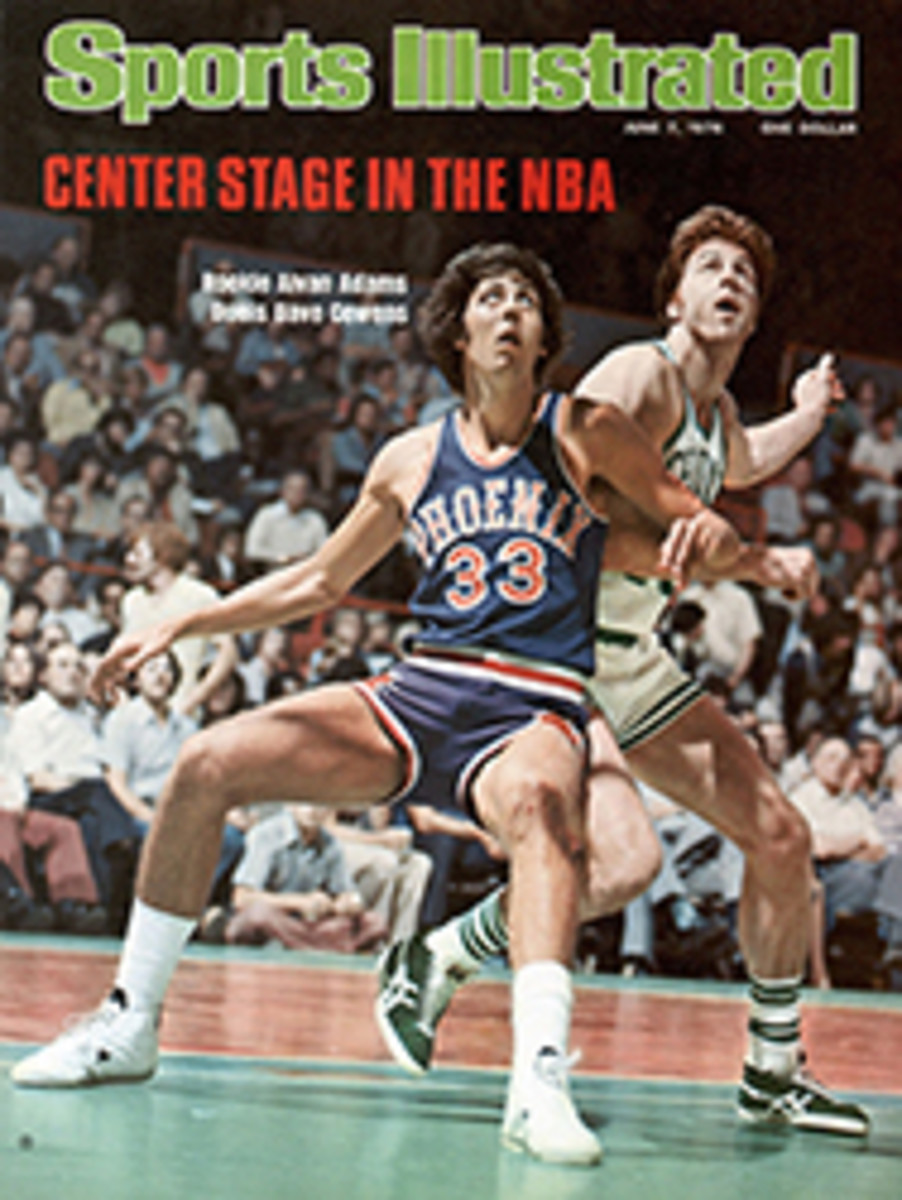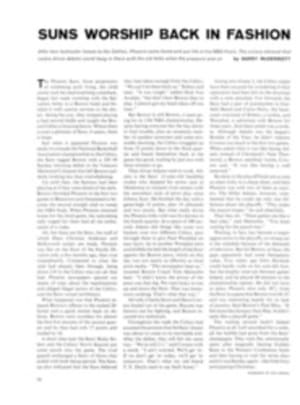
SHE CAN HANDLE THIS FIELD
It is rare for television to allow an unknown to work sporting events on camera in any market, let alone a major one. Local station managers seem as convinced as network executives that audiences are just as star-struck as they are themselves, that a baseball score becomes a Gettysburg Address when delivered by a former star shortstop, that news of the National Football League plays better when filtered through the head of a onetime Super Bowl quarterback.
Since January, however, WOR-TV in New York, the nation's heaviest programmer of televised sports (1,000 hours per year), Marvin H. Sugarman Productions and the New York Racing Association have been taking a gamble on an unknown named Charlsie Cantey. Charlsie, 30, was not discovered aboard a Kentucky Derby winner or even on the U.S. Equestrian Team. Cantey knows what she is talking about because she came to TV by way of the backstretch of New York racetracks, where she works horses every morning. Most afternoons she breaks yearlings and 2-year-olds at the Long Island estate of Ogden Phipps. She is married to Joe Cantey, a trainer of five years' experience. And if all of the above were not enough to give her horse sense, she is also part owner of a 10-year-old gelding, Too Many Chiefs, the oldest horse running at NYRA tracks and a lifetime winner of nearly $100,000.
This year she will make some 50 Saturday afternoon appearances on the Racing from Belmont (or Aqueduct or Saratoga) show, and although she is playing to a relatively small audience in rating terms—an estimated 300,000 viewers per week—she has already struck the right notes. Racing from does a fine job of what it sets out to do: telecasting and interpreting the feature race and the Triple, or last race. Horses are introduced and discussed, jockeys and owners interviewed and upcoming races previewed. The program allows customers of New York's Off-Track Betting Corporation to watch their money run, but probably also creates new live customers for the tracks. The show uses four cameras and costs an estimated $18,000 a week to produce.
Until Charlsie Cantey entered the picture, Racing from functioned with two announcers, Dave Johnson, the 32-year-old public-address voice of the New-York tracks, and Frank Wright, a trainer who is often seen on CBS. Johnson and Wright were fine together for three years, but last fall Bill Creasy, the executive director for television and film for NYRA, let it be known that there was interest in adding a woman to the show. "We wanted someone from around the racetrack who knew horses and racing and could explain things to the audience," Creasy says. Frank Tours, a member of NYRA's publicity staff who had been instrumental in producing live racing shows from Santa Anita over Los Angeles' KNXT-TV for 13 years, recommended Charlsie. "She had worked Sarsar for Trainer Frank Whiteley," Tours says, "and that was a difficult filly to work. I noticed how well she got along with grooms, trainers and owners, and thought she might be O.K."
Cantey appeared on a fall segment of the show as an interviewee. On the winter day she began her telecasts she was called at 11:30 in the morning to do the program the same afternoon. "Outside of the time I was on the show as a subject," she says, "I had appeared on television only once before. I stumped the panel on What's My Line? and got $50. My line was that I exercised a filly named Arlene Francis. The real Arlene Francis didn't guess what I did. It was Olympic time, and the panel members thought I had something to do with the Olympics."
Charlsie got her name because her father wanted a boy for his third child, and was going to name him Charles Oscar. He got as close as he could. Charlsie graduated from George Washington University in 1968 despite having cut quite a few classes to gallop racehorses. "She was always interested in horses," says her sister, the author and Washington TV personality Barbara Howar. "I used to buy her pony rides, and she wouldn't get off. I'd run out of money, and the other kids would be lined up, waiting for their rides. She knows her subject. Not a lot of people on television do."
When she began galloping horses at Delaware Park after graduation, Cantey was paid $150 per week but took a cut to $85 when she went to New York, where her husband was working. "The biggest difference on the racetracks these days is in the number of women who work there," she says. "When I started in 1968 maybe there were two dozen, now they make up 35 to 40% of the help." Except for an occasional old movie, Cantey does not watch television. "I really don't have the time," she says, "and I couldn't imagine myself wasting an afternoon on soap operas, although I did discover that soap music can be soothing if you are doing other things."
Cantey is at the racetrack every morning at 6 a.m. working four or five horses 45 minutes each for Frank Whiteley's son David. She also cleans tack and sweeps and rakes around the barns. "I guess I still lack some confidence," she says, "but I'm trying. People seem to know me at the post office and the cleaners."
Now the networks know her, too, and have expressed some interest. The Racing Form prints handicapping phrases every day that could easily be applied to Charlsie Cantey: working steadily, due for improvement, has the credentials, rates attention, can handle this field.
PHOTO
CHARLSIE CANTEY KNOWS HER OATS ON HORSE RACING

